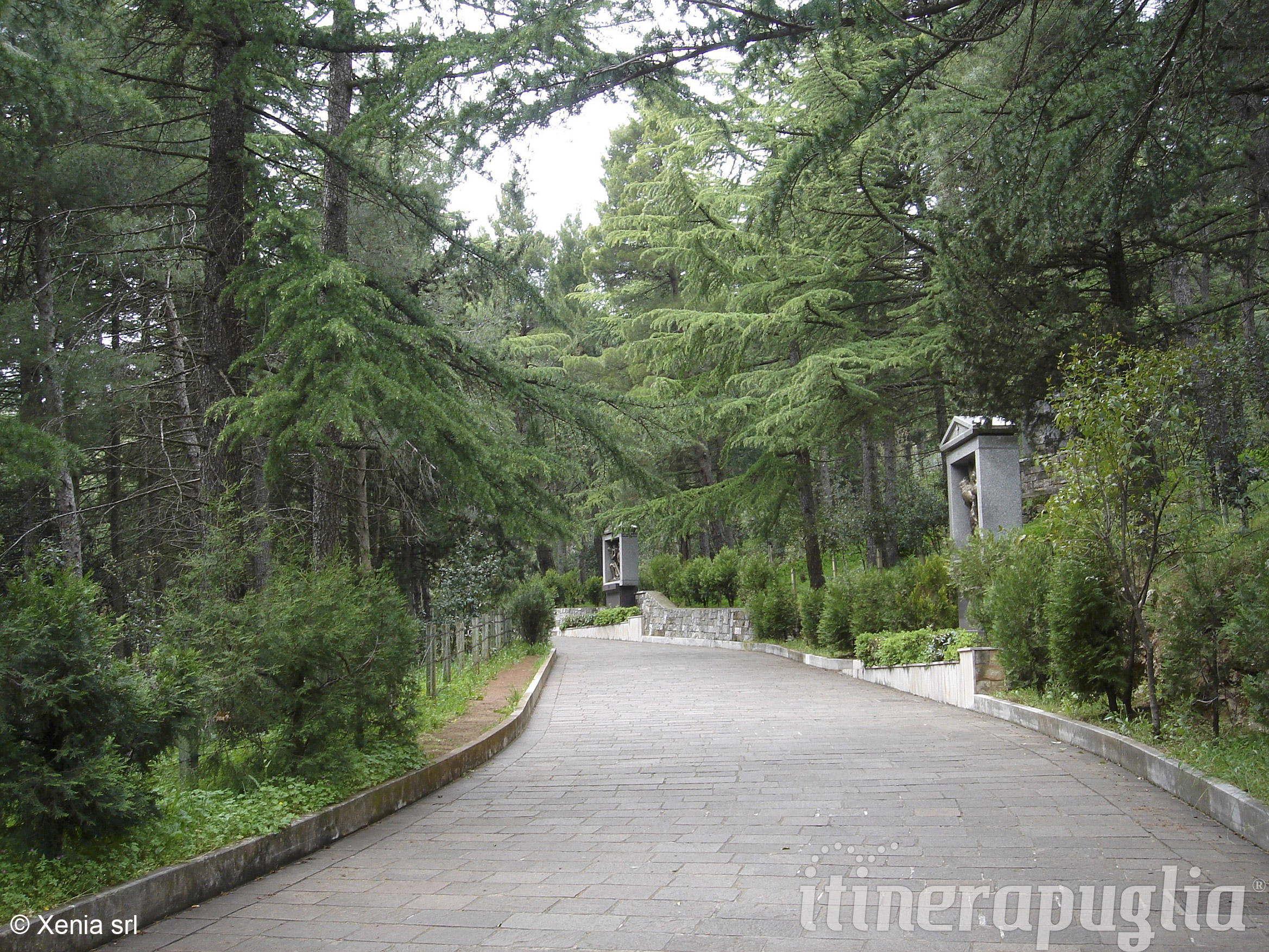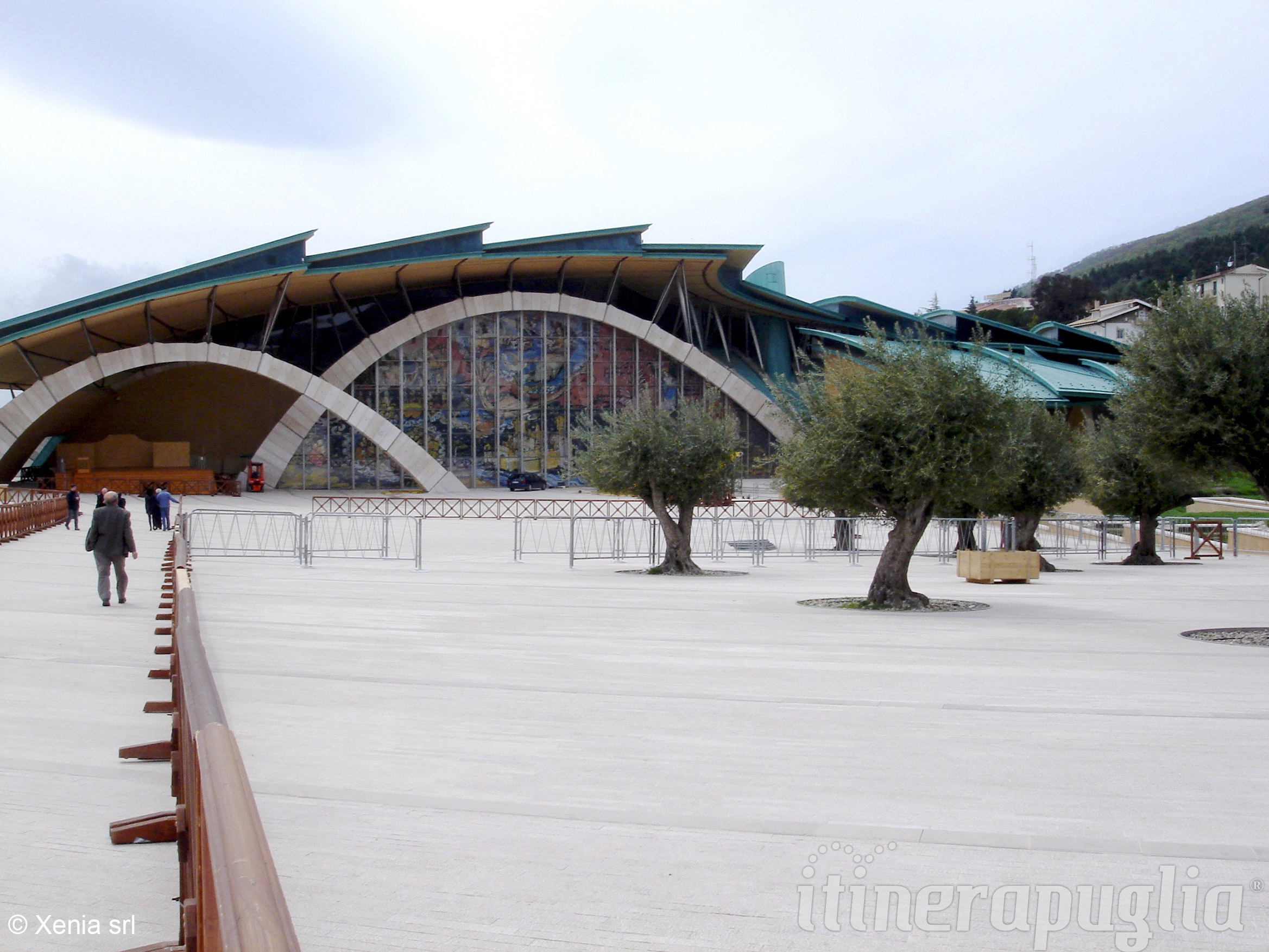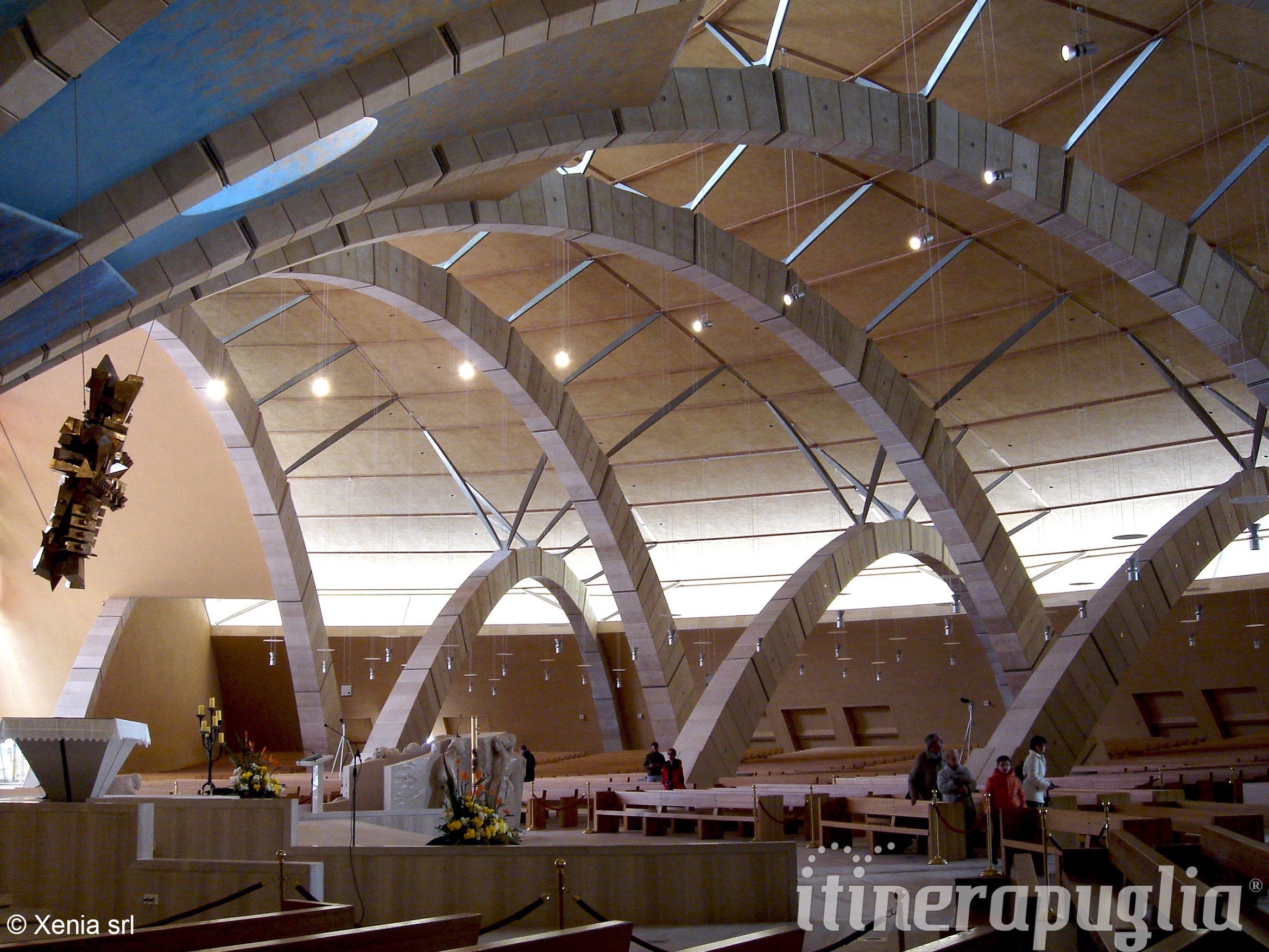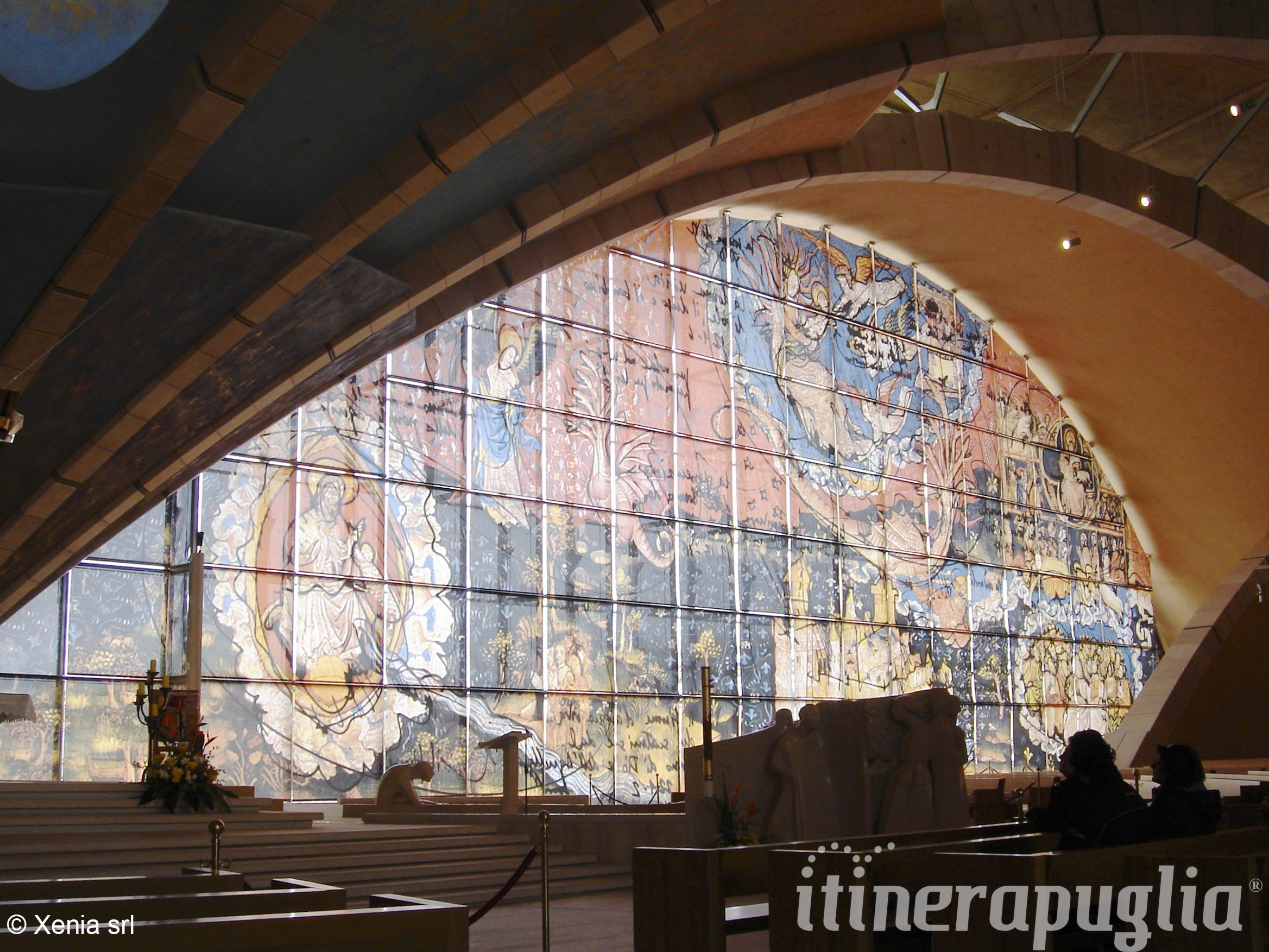The Church of San Pio
San Giovanni Rotondo is a lovely town nestled in the beautiful National Park of Gargano, its territory stretching from the foothills of the Gargano until the expanse of Tavoliere and for this reason the San Giovanni Rotondo Territory is of great scenic and scientific interest.
There are numerous religious and civil architecture in the historic center of the city such as the ancient palaces and the remains of the old walls and towers that made up the city’s defense system.
 But San Giovanni Rotondo is mainly the city of St. Pius and the large flow of tourists is closely linked to the cult of the saint and is consumed almost exclusively around the area of the beautiful new church dedicated to St. Pius and designed by the famous architect Renzo Piano.
But San Giovanni Rotondo is mainly the city of St. Pius and the large flow of tourists is closely linked to the cult of the saint and is consumed almost exclusively around the area of the beautiful new church dedicated to St. Pius and designed by the famous architect Renzo Piano.
All the great work was almost entirely funded by donations from pilgrims and inaugurated in 2004, after ten years of intense work.
The Temple is a great work that can accommodate up to 6,500 people, while a large open space communicating with the nave allows other 30 thousand people to attend the ceremonies.
Visiting the shrine will verify that the leading idea is to welcome and guide the faithful in the liturgy of the House by a path that leads seamlessly from an open to the interior space.
 The processional route starts from the Colonnade Salita, below the area of the square, covered by a vault of wood with copper cladding and paving in Apricena stone.
The processional route starts from the Colonnade Salita, below the area of the square, covered by a vault of wood with copper cladding and paving in Apricena stone.
The path of the Colonnade is punctuated by columns at the top of which are placed eight bells made by the Pontifical Foundry and characterized incision auspicious “Pax et Bonum”, Peace and Good.
The colonnade, alongside the bells, you will see “eagles”, representing an ancient belief described in the Psalms according to which the eagle before he died flying towards the sun in order to regenerate.
Always close to the bells is the Great Cross, “focus” for the pilgrim who arrives in the churchyard.
The work consists of a shaft 40 meters high made up of 65 blocks of stone with horizontal arms of 3.50 meters.
The path of the pilgrim, in the churchyard, is punctuated by 12 fountains and olive trees. The fountains are communicating with each other and evoke the Jordan River.
In the churchyard stands the large facade in glass and steel depicting the Apocalypse of St. John, on the other side of the large window the classroom entrance is located liturgical and on the left there is the Baptistery with the small door for entry of neophyte to the temple.
The inner space of the classroom liturgical Upper Church has three naves with semicircular.
The structure of the church is made of stone Apricena, in particular leave you breathless large interior arches arranged radially over the altar and serving to support a beautiful copper and wood cover.
 The arches are made using innovative construction processes result of extensive technological experimentation, because for the first time since the great Gothic cathedrals is used in load-bearing stone arches of this size.
The arches are made using innovative construction processes result of extensive technological experimentation, because for the first time since the great Gothic cathedrals is used in load-bearing stone arches of this size.
The plan of the temple resembles the shape of a shell whose focus corresponds central altar.
Altar branch ranged arches fixed that seem gradually wind the faithful to welcome them into a single, big and fraternal embrace.
The Church is divided into an Upper and Lower part.
The Upper Church includes the nave, the Chapel of the Eucharist contains the famous Tabernacle sculpted by Floriano Bodini and the Sacristy.
The Lower Church contains the Crypt, three conference rooms, a room for the reception of pilgrims and Penitentiary consisted of 31 sectarian and completely soundproof.
 The stone altar and the overlying bronze cross are the artist Arnaldo Pomodoro, the monumental ambo is the work of Giuliano Vangi. The organ, 11 meters high, 10m wide. deep and 6m. It is the oak wood and ivory inlays of mammoth.
The stone altar and the overlying bronze cross are the artist Arnaldo Pomodoro, the monumental ambo is the work of Giuliano Vangi. The organ, 11 meters high, 10m wide. deep and 6m. It is the oak wood and ivory inlays of mammoth.
The Chapel of the Eucharist has its focus in the tabernacle by the sculptor Floriano Bodini and in stained glass by Michele Song Books.
In the area below the presbytery is the lower church with an organ of smaller size than that of the upper church. Additional spaces of the religious complex are functional in meetings and the reception of pilgrims.
In collaboration with the editors of Itinerapuglia.com




